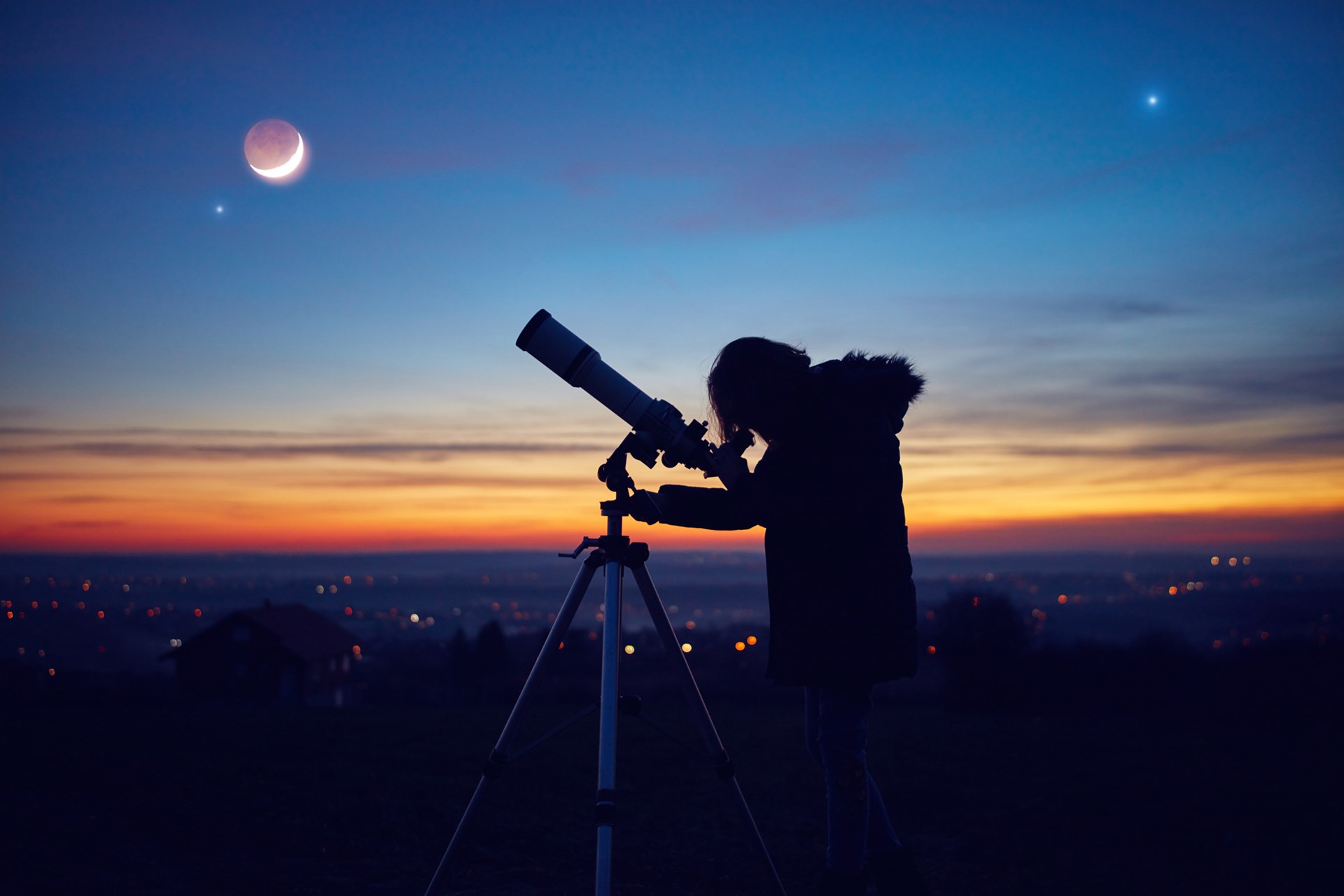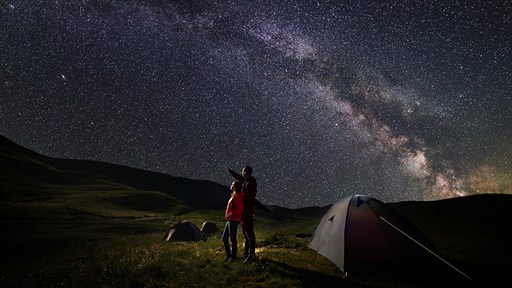One of the best reasons to go camping is to kick back and look to the sky. From stargazing to eclipses and more, experiencing the sky from day to night is one of the best things about enjoying the great outdoors. In 2024, there will be plenty of astronomical events for campers and road trippers to add to their travel plans. Be sure to make your travel plans early! You won’t want to miss out on these meteor showers, full Moons and other awesome celestial events.
While many of these can easily be seen without special equipment, some might require a telescope or other spotting equipment.
Here Are the Astronomical Events You Need to See in 2024
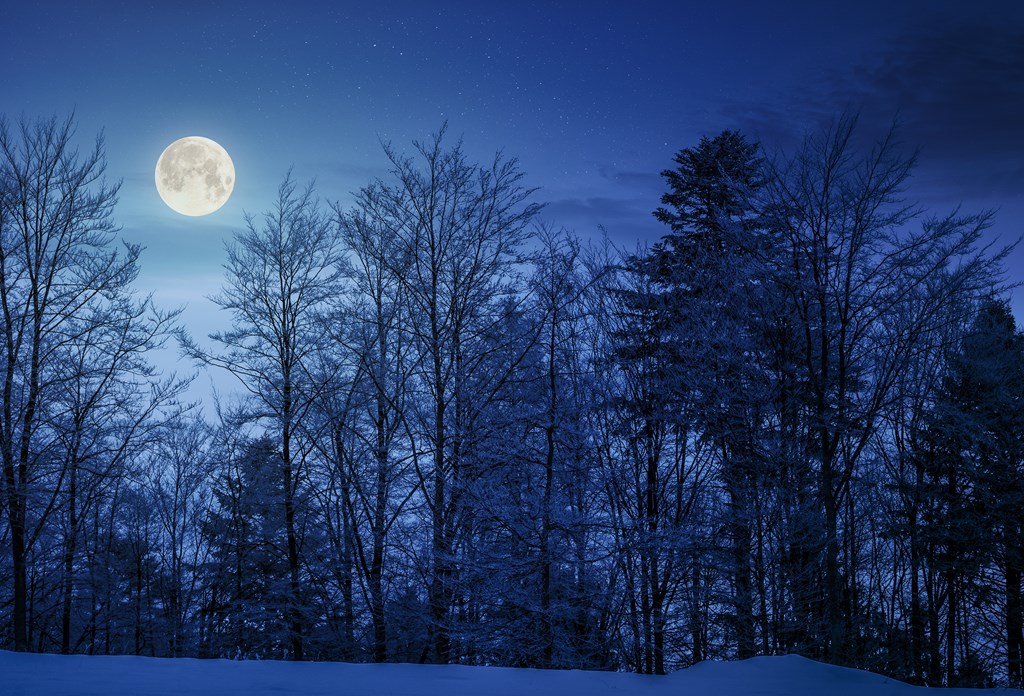
February 24 – Full Snow Moon
The second full Moon of the year, the Snow Moon, is nicknamed for the cold and snow that typically come with the month of February.
February’s full Moon is the opposite of a supermoon. Micromoons occur when the Moon is at its apogee – the farthest point from Earth in its orbit. This means that the Moon will appear smaller than a typical full Moon.
March 19 – Spring Equinox
Astronomically, spring begins just after 11:00 p.m. (EDT) on Tuesday, March 19. During this event, the Sun will appear directly over the equator. This means that areas both north and south of the equator will receive nearly equal amounts of daylight and night.
Known as the vernal equinox, this day also marks the continuation of earlier sunrises and later sunsets in the Northern Hemisphere. This trend continues until the summer solstice in June.
March 25 – Full Worm Micromoon
Spring’s first full Moon will reach its peak around 3:00 a.m. (EDT). March’s full Moon, known as the Worm Moon, is named for the warming soil and new life that March brings – including earthworms.
During this event, you might find that the Moon appears dimmer than usual. This is because the Moon will pass through Earth’s shadow, causing a penumbral lunar eclipse. Since the Moon is not passing directly between the Sun and Earth, like in a total lunar eclipse, the effects will be minimal. Astronomers suggest using binoculars or a telescope to view the subtle changes.
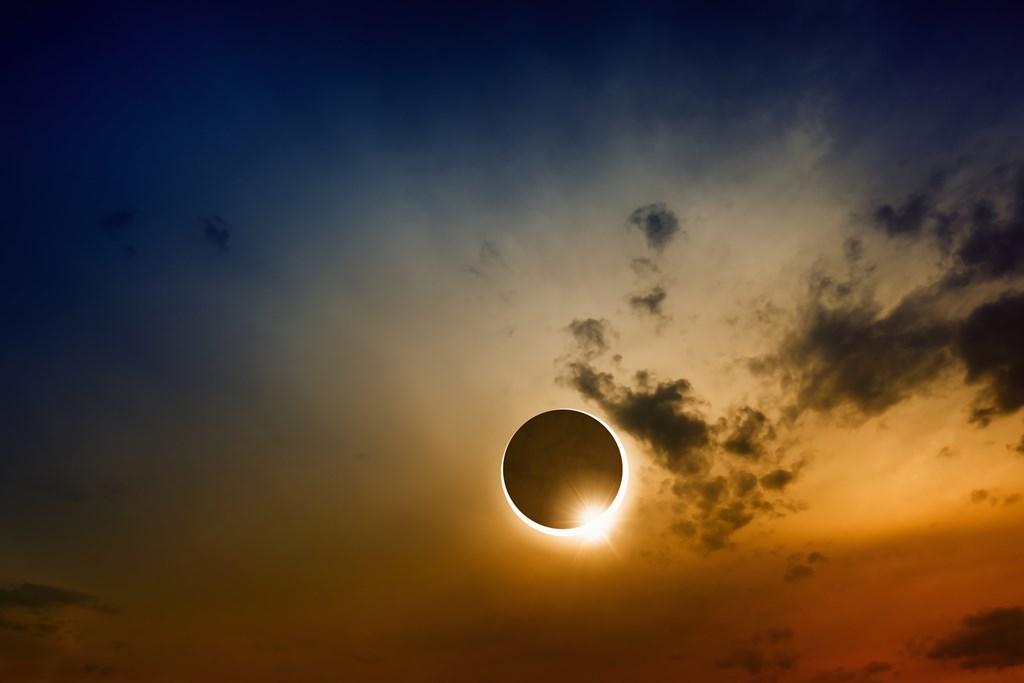
April 8 – Total Solar Eclipse
On Monday, April 8, the Moon will completely block the Sun across a significant expense of Central and North America. Taking place in the afternoon, the eclipse will travel over Mexico before crossing into Texas. In total, 14 states will experience totality, along with five Canadian provinces. While the path of totality, the area where viewers will experience a complete intersection of the Sun and Moon is 115 miles wide, people across the eastern half of the U.S. will be able to experience a partial eclipse.
In the U.S., totality will begin in Texas at 1:27 p.m. (CDT) and end in Maine at 3:35 p.m. (EDT).
Be sure to wear protective eyewear for this event.
April 20 – Jupiter and Uranus Visible
While Jupiter will have been an easily visible fixture in the western sky after sunset for months, Uranus is much harder to spot. On April 20, the proximity of the two planets, just .5 degrees apart, will make finding Uranus easier.
Looking west, when the sky falls dark after sunset, Uranus will appear as a greenish “start” just to the right of Jupiter. Binoculars or a small telescope are suggested.
April 21 – 22 – Lyrid Meteor Shower
Active from April 15 – 25, the Lyrid meteor shower will reach its peak around April 22. This annual event occurs when space debris from comet C/1861 G1 Thatcherm becomes visible from Earth.
In a dark sky, not illuminated by the Moon, you’ll typically see 10 – 15 Lyrids per hour with uncommon surges that bring rates of 100 an hour. Unfortunately, the brightness of the nearly full Moon will affect visible meteors.
April 23 – Full Pink Moon
While the name suggests it, April’s full Moon, unfortunately, isn’t pink. Instead, this full Moon’s name reflects the spring flowers that bloom in April.
The Pink Moon will reach peak illumination at 7:49 p.m. (EDT).
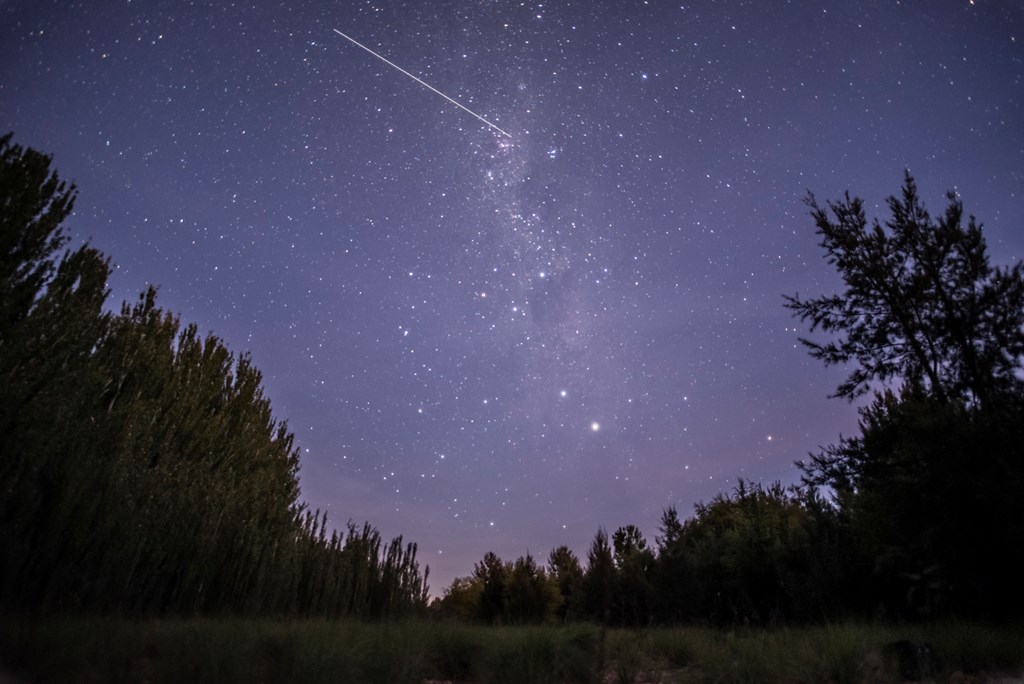
May 4 – 6 – Eta Aquarid Meteor Shower
The Eta Aquarid meteor shower is active between April 15 and May 27, with its peak beginning on May 4. The best mornings to watch will be the pre-dawn hours of May 5 – 6.
One of the better meteor showers of the year, the chunks of space debris that create the Eta Aquarids come from one of the most famous heavenly visitors: Halley’s Comet. The best viewing of this strong shower, with 60 meteors per hour, is in the Southern Hemisphere. North of the equator, observers can expect to see around 10 to 30 meteors during the shower’s peak.
May 23 – Full Flower Moon
The last full Moon of spring, the Flower Moon, gained its nickname due to the growing abundance of flowers in the late spring. The Flower Moon will be at its brightest at 9:53 (EDT).
June 20 – Summer Solstice
Caused by the North Pole reaching its greatest tilt toward the Sun, the summer solstice represents the longest day and shortest night of the year in the Northern Hemisphere. While the event marks the beginning of astronomical summer, meteorological summer starts weeks earlier on June 1.
While the Sun’s rays are most direct on this day, due to the time it takes the surface of Earth to warm and release energy, the hottest summer days lag behind the longest day of the year.
After June 20, the days will begin to shorten until reaching December’s winter solstice.
June 21 – Full Strawberry Moon
With the strawberry season reaching its peak, June’s full Moon is called the Strawberry Moon. Gracing the skies just after the beginning of astronomical summer, the Strawberry moon will reach its peak at 9:07 p.m. (EDT).
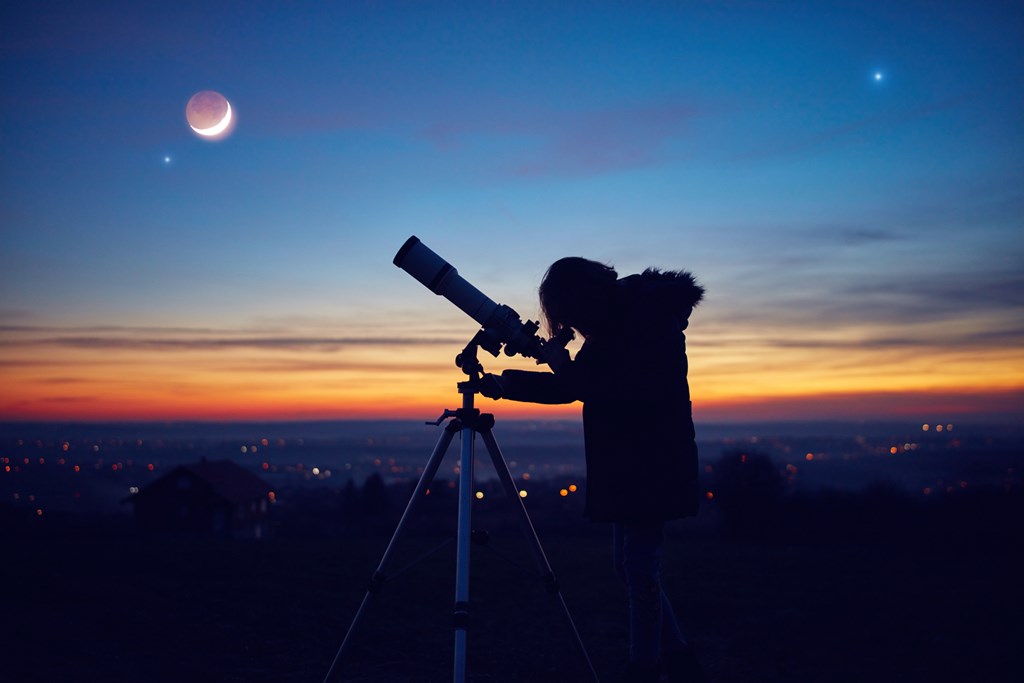
July 15 – Mars & Uranus Visible
Early in the morning of July 15, Mars and Uranus will be visible high above the easter horizon. Visible about an hour before sunrise, this phenomenon is known as a planetary conjunction. A planetary conjunction occurs when two or more planets appear close to each other in the sky. Generally, this proximity is an optical illusion as planets are separated by many millions or billions of miles.
Look to the constellation Taurus to find this planetary conjunction.
July 21 – Full Buck Moon
Named for a male deer, the Buck Moon of July will peak in the morning hours. Officially, July’s full Moon will reach its peak illumination at 6:17 a.m. (EDT). Considering this, the best nighttime viewing of the Moon will be either the night of the 20 or 21.
The Buck Moon marks the last regular full Moon for months; the next four full Moons will all be Supermoons.
July 30 – Southern Delta Aquarid Meteor Shower
The Delta Aquarids will appear in the southern sky from mid-July to mid-August. While this meteor shower favors the Southern Hemisphere, you can get a great view of parts of the southern United States. The Southern Delta Aquarid meteor shower will reach its peak around July 30. If you watch the night sky in early August, you’ll likely experience a mix of both the Delta Aquarids and the Perseid meteor shower.
This meteor shower accompanies the Marsden and Kracht comets. While trying to catch a glimpse of the Delta Aquarid meteors, also look out for Mars and Jupiter. They are expected to appear close to the Moon throughout the night.
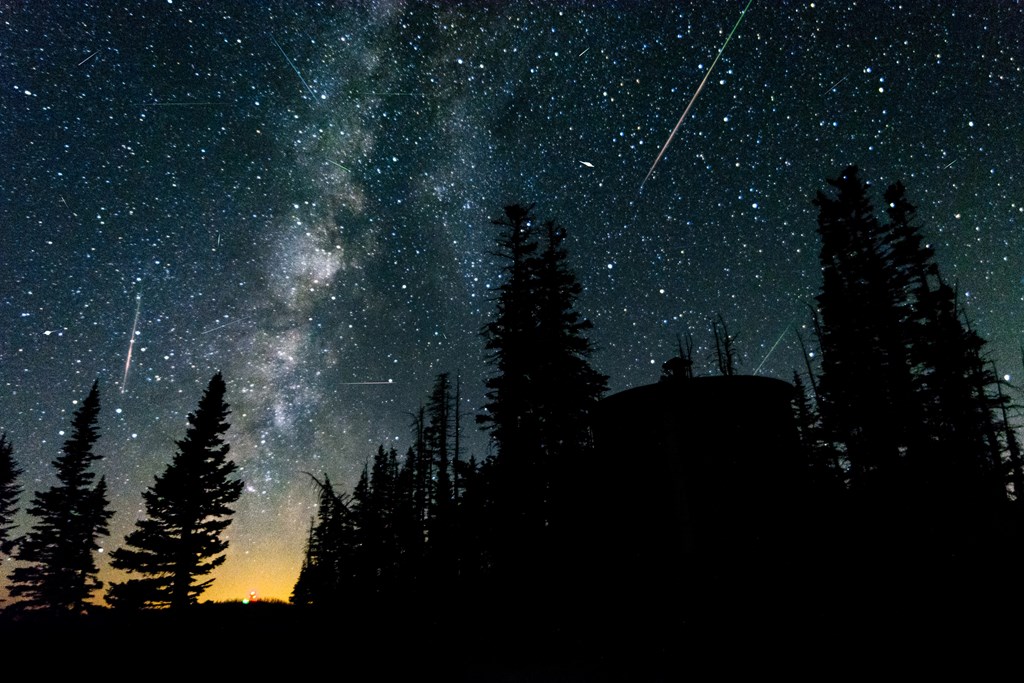
August 12 – 13 – Perseid Meteor Shower
One of the most popular meteor showers of the year in the Northern Hemisphere, the Perseids bring between 50 and 75 meteors per hour in rural locations. This event is active from late July to late August, peaking the night of August 12 and before dawn on August 13. Though the Moon will be 50% illuminated during the peak of the Perseid meteor shower, a moonset around midnight will provide the perfect dark skies for viewing.
The Perseids are caused by Earth passing through debris from the Swift-Tuttle comet.
August 19 – Full Blue Sturgeon Moon
The eighth full Moon of the year, the Sturgeon Moon, will actually reach its peak brightness during the afternoon hours. However, since August’s full Moon is the first of four Supermoons in 2024, you’ll still get a great view once night falls. This full Moon is named for North America’s largest freshwater fish: the white sturgeon.
Supermoons occur when the Moon reaches its perigee. This is the closest point to Earth in the Moon’s orbit – less than 230,000 miles away. This means the Moon will appear larger than the average full Moon.
In 2024, the Sturgeon Moon will also be a season Blue Moon. This means that it is the third of four full Moons within an astronomical season.
September 8 – Saturn Nearest Earth
Saturn, the sixth planet of our solar system, will be at its brightest. The yellow planet will be visible without the help of optical aids, but you’ll need a telescope or high-powered binoculars to see its rings. Viewers with a telescope may also catch a glimpse of some of Saturn’s 83 orbiting moons.
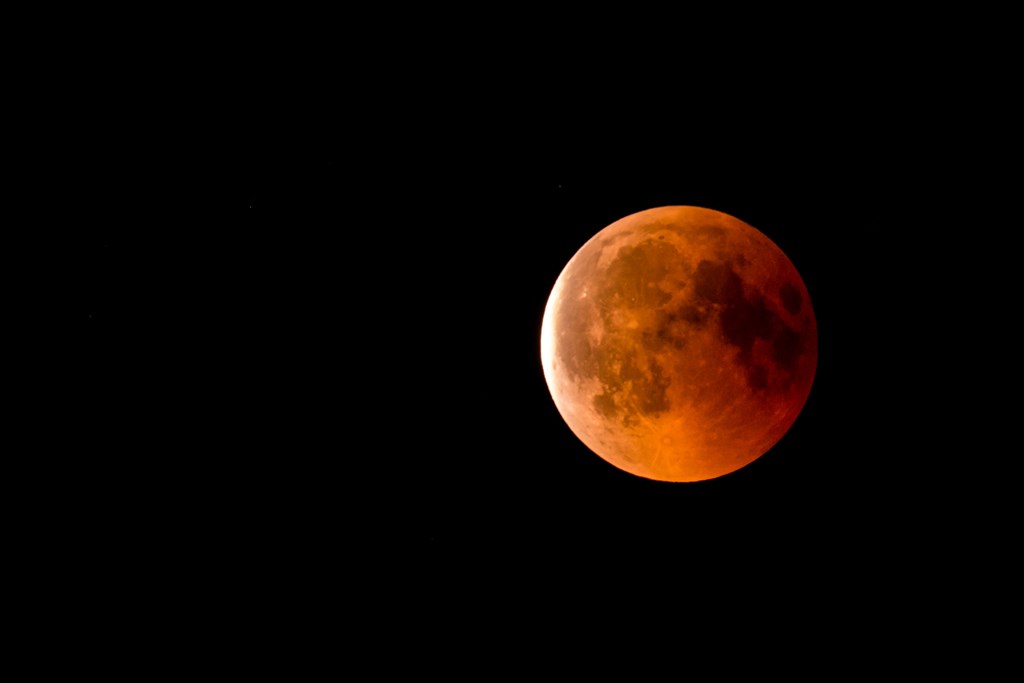
September 17 – 18 – Partial Lunar Eclipse
Visible from most of North America and the greater Western Hemisphere, this partial lunar eclipse will begin on the evening of September 17 when the Moon passes through Earth’s shadow. Like the March event, you’ll want binoculars or a telescope to see the subtle change in the Moon’s appearance.
Believe it or not, lunar eclipses are not rare and generally occur two to three times each year. The next lunar eclipse will be visible in the Northern Hemisphere in April 2025.
September 17 – Super Harvest Moon
The second Supermoon of the year is known as the Harvest Moon or Corn Moon, both relating to the harvest season that begins in the fall. Just like in August, this full Moon is nearer to Earth than others, causing it to be large and luminous.
September 20 – Neptune’s Closest Approach to Earth
Earth will pass between the Sun and Neptune on September 20. This marks the closest distance between these two planets. With clear skies, Neptune will appear as a tiny speck in the sky, so a telescope is suggested.
Even at its closest point, Neptune is still 2.7 billion miles from our planet. In comparison, Mars is only 140 million miles from Earth.
September 22 – Fall Equinox
Like the spring equinox, September 22 will have even proportions of sunlight and night. This date also marks the halfway point between summer and winter, with days continuing to shorten and nights becoming longer.
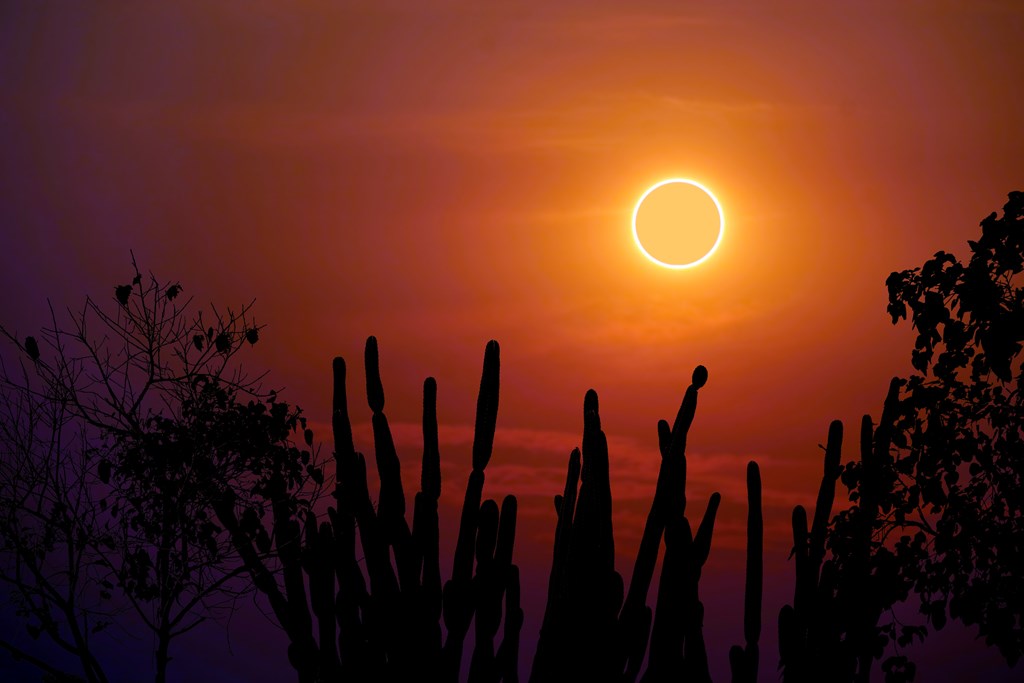
October 2 – Annular Solar Eclipse
The final eclipse of 2024 will only be visible if you take a visit to Hawaii or the greater Pacific.
During an annular eclipse, the Sun is never completely blocked by the Moon. Rather than total darkness, this produces a ring around the edges of the intersection of the Moon and Sun – known as the ring of fire.
As with a total eclipse, viewing the event without specialized eye protection is unsafe.
October 8 – Draconid Meteor Shower
Unlike other meteor showers, the Dracnoid’s radiant point is highest in the sky as darkness falls. This means you’ll see more meteors during the evening hours than in the hours after midnight. It also tends to be a more relaxed event, producing only a handful of meteors per hour in most years.
In more active years, the Dracnoid shower can have hundreds of meteors in a single hour as the comet 21P/Giacobini-Zinner journies past Earth. While shoes have been weak in recent years, you never know when this shower could show off.
October 13 – Tsuchinshan-ATLAS Comet
Only recently discovered in 2023, Comet Tsuchinshan–ATLAS will be visible to the naked eye even though it is more than 43 million miles away.
There’s also the possibility its proximity to the Sun before approaching Earth could lead to the end of the dusty and icy comment. Astronomers are eagerly awaiting the event, which may be surprising or disappointing. If the comet survives its brush with the Sun, sightings of the comet should begin on October 12 or 13 and last for a week.
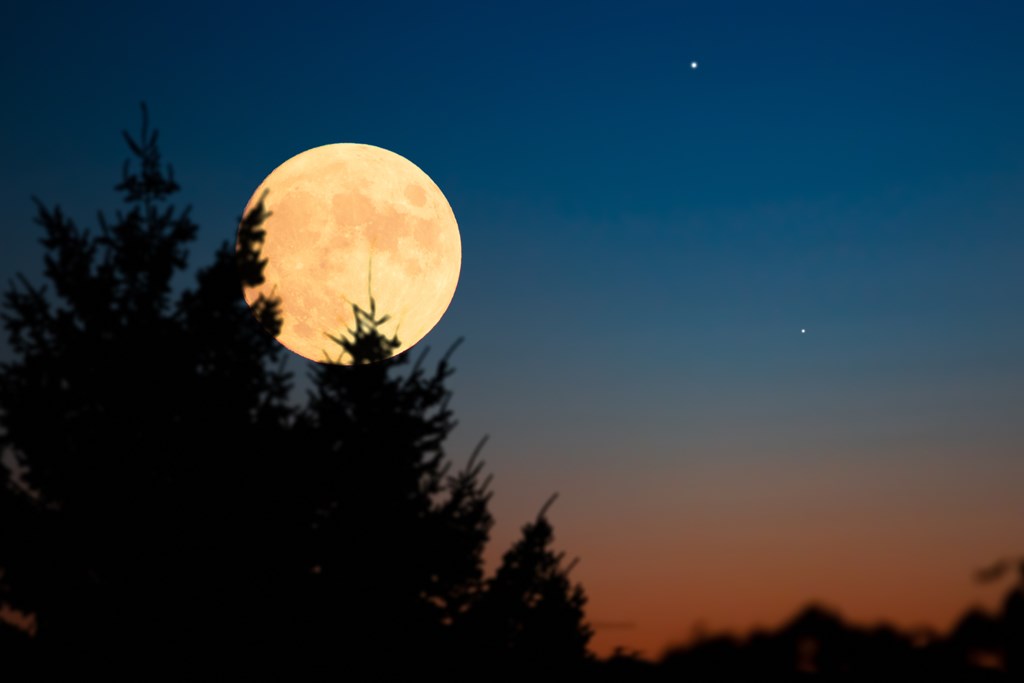
October 17 – Super Hunter’s Moon
The third of four Supermoons, this will be your last chance to catch a bigger, brighter Moon in 2024. The Hunter Moon is named for hunting and stocking of food that takes place in the fall.
During this full Moon, the Orinoid meteor shower will reach its height. However, due to the bright moonlight, most meteors will be incredibly faint or not visible.
November 15 – Super Beaver Moon
The last Supermoon of 2024 will peak in the afternoon, but the show should be just as good after the Sun sets. Why is it called the Beaver Moon? Opinions are mixed. Some believe it originated because of beaver traps set out by Native Americans. Others think it comes from the increase in dam-building beavers take on before waterways freeze.
Like October, this Supermoon occurs during a meteor shower, affecting visibility. In November, viewing the Leonid meteor shower will be difficult. Your best bet to catch sight of them will be the night of October 17 and into the early morning hours.
Every 33 years, the Leonids produce a meteor storm with at least 1,000 meteors per hour. This last occurred in 2002, so intensity should be growing until 2035, when it hits its peak.
December 6 – Jupiter Closest to Earth
While still more than 370 million miles from Earth, the fifth planet in our solar system will be at its nearest point and visible in the sky all night. While you won’t need an aid to see Jupiter, using a telescope or even binoculars should allow you to catch some of the planet’s 95 moons. An added bonus, between dusk and dawn, Venus, Mars and Neptune should also be visible at varying times.
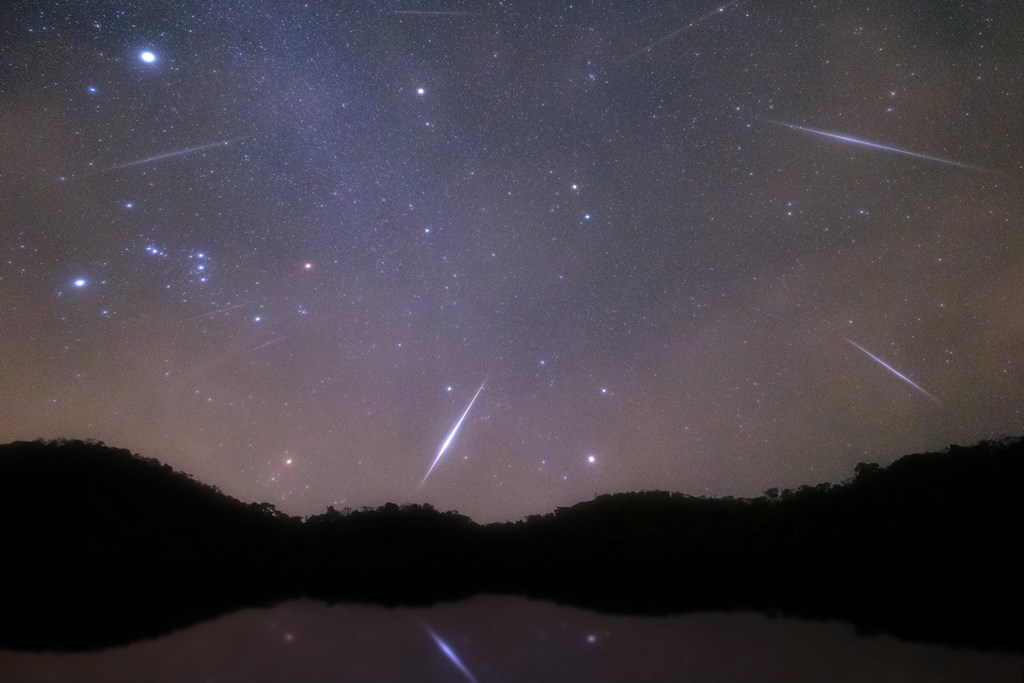
December 14 – 15 – Geminid Meteor Shower
Usually the strongest meteor shower of the year, the Geminid’s visibility will be affected by a full Moon in 2024. However, remember that meteors associated with the event occur outside of the peak on December 14 – 15, so look for meteors the week before or after.
The asteroid 3200 Phaethon and its debris field are the cause of this astronomical event.
December 15 – Full Cold Moon
The final full Moon of the year is December’s Cold Moon. This instance of the full Moon is named such for pretty obvious reasons. Looking to 2025, the year’s first full Moon will appear 29.6 days later on January 13.
December 21 – Winter Solstice
The Northern Hemisphere will enter astronomical winter at 4:19 a.m. (EST) on this December day. The winter solstice marks the shortest day of the year in the North Hemisphere.
The good news? Daily sunlight will be increasing daily through June 20, 2025.
Like in the summer, the winter solstice typically means the coldest days of the year lie ahead due to seasonal lag. Be sure to bundle up and start planning those spring and summer camping trips!
About the Author: Kampgrounds of America
Kampgrounds of America is the largest system of open-to-the-public campgrounds in the world, with over 500 locations across the United States and Canada. Founded in Billings, MT in 1962, KOA’s family of campground brands – KOA Journey, KOA Holiday and KOA Resort – today serve more than a million camping families each year. KOA is dedicated to “connecting people to the outdoors and each other” by providing people with a variety of camping experiences and the information they need to make the most of their camping trip. Read more of their camping and travel resources by visiting KOA.com/blog.


















